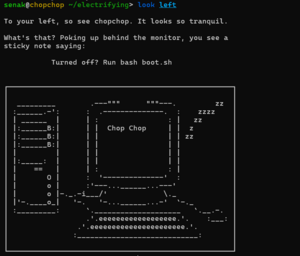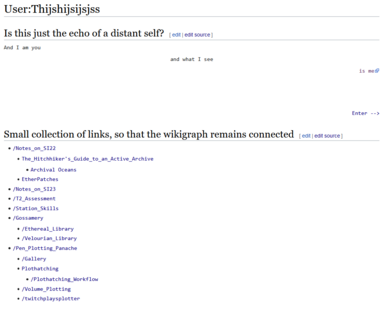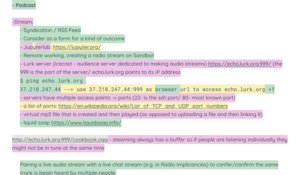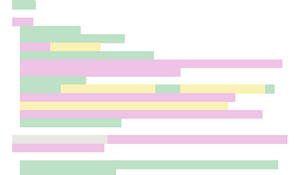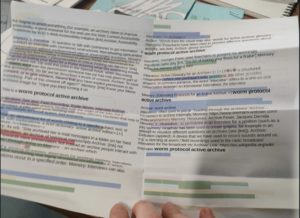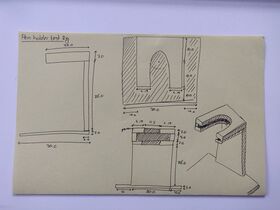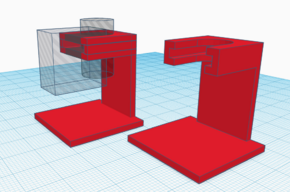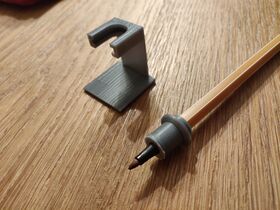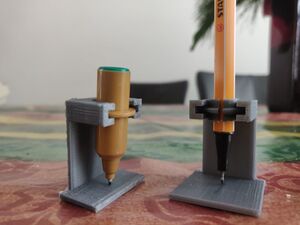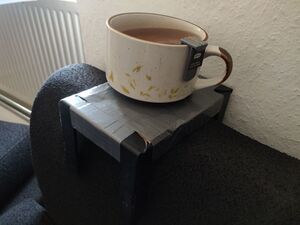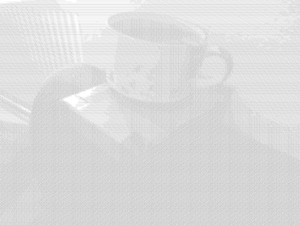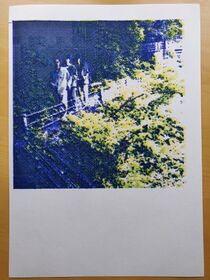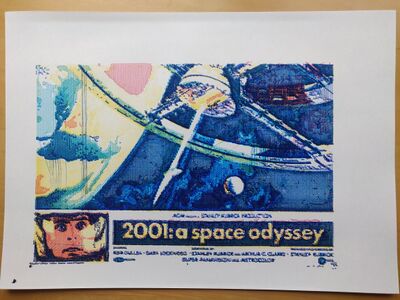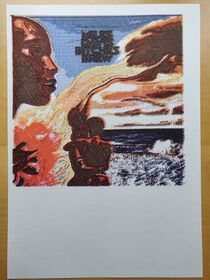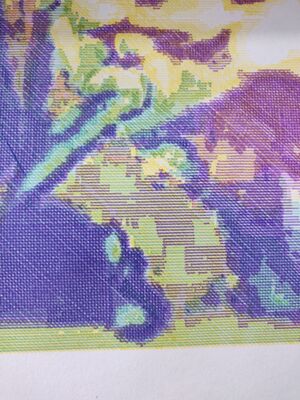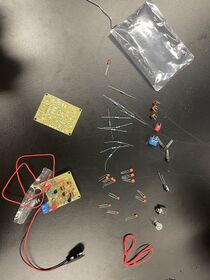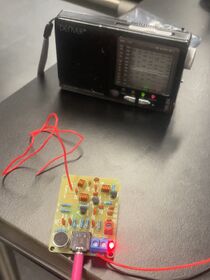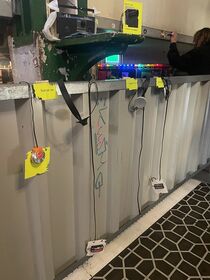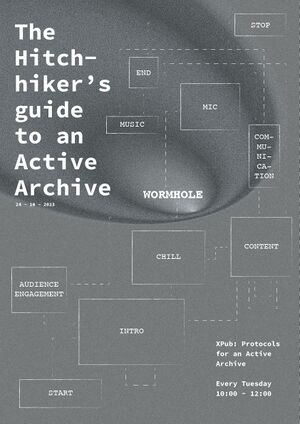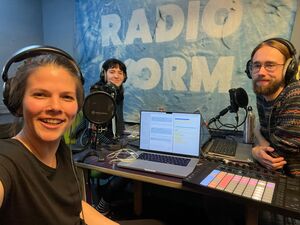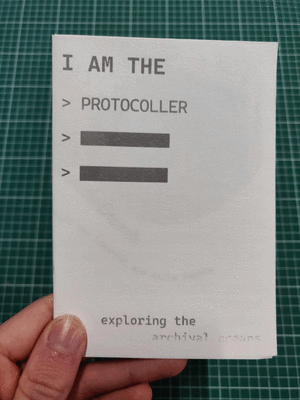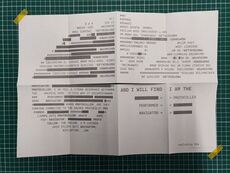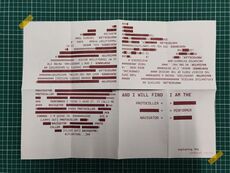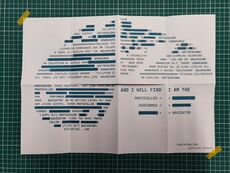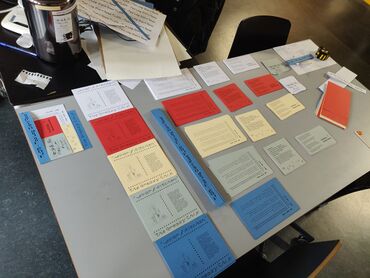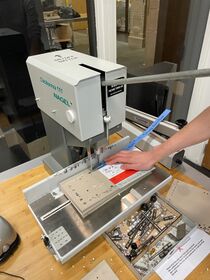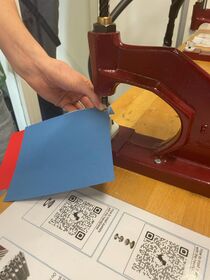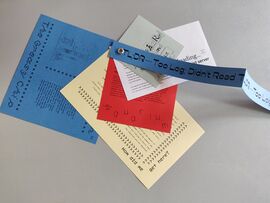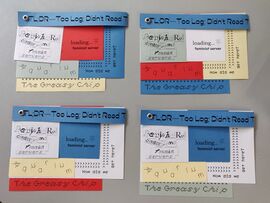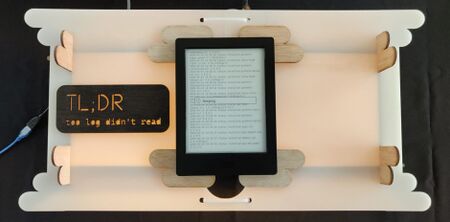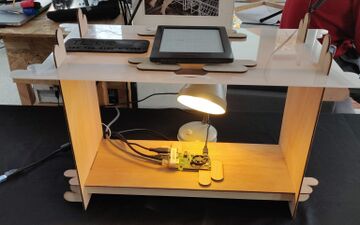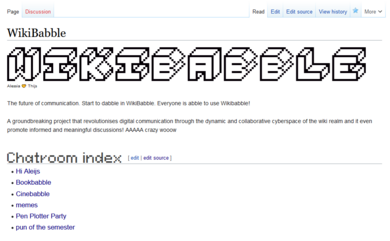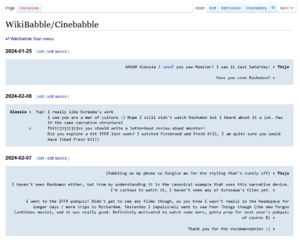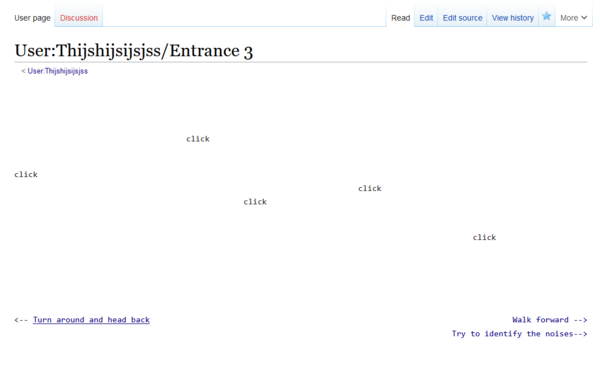User:Thijshijsijsjss/T2 Assessment
This is a page for Thijs's Trimester 2 Integrated Formative Assessment that took place on 2024-04-03. Present were:
- Student: Thijs van Loenhout
- Tutors: Michael, Manetta, Joseph, Marloes
This page serves both as the presentational material of this assessment, as well as its own documentation. In this self-documenting way, it provides a 'script' for the 'performance' of presentation. This is a non-linear one. There are many links referencing to other sections. All presentational content is contained in this one page. However, there are also links to other wiki pages. When relevant, these are marked to indicate this.
Setup
Connect your device to a big screen facing the audience.
Student: Would it be okay for me to record the presentation? [show audio recorder] Not the panel discussion, of course.
If yes: Student: Okay, great! [start audio recording]
If no: Student: Okay, no problem! [put audio recorder back in backpack]
If student is ready to start, and asked or prompted to do so: Student: Yes, I am ready!
If student is ready to start, but not asked or prompted to do so: Student: I'm ready to start. Are you? [look around questioningly]
If student is not ready to start, but asked or prompted to do so: Student: Sorry, I'm not quite ready yet.
Introduction
Start a timer.
Student: Hello. Thank you all for being present today for my assessment. This is a self-documenting presentation: a self-contained, self-referencing, playable compilation of 'slides', multi-media and script. Today, I will perform this presentation for you. Most importantly, I will NOT follow the script.
Tutors: That's okay!
Student: Thank you. Further interaction is not required. The rules of play today are as follows: 1. The presentation consists of connected 'content blocks'. When arrived at a content block, Student will talk about them as they like. 2. Student will navigate through these blocks by the connected links. 3. If all options are exhausted already, Student goes to the Feeling Lost...? section. The goal is to navigate through this presentation in a way such that: 1. The themes are discussed 2. The methods are discussed 3. To finish in time by arriving at Wrap up Let us get started.
Presentational Content
Student: I will mainly go over projects that I worked on in these first two trimesters. Hopefully I will be able to shed some light on my whats, hows and whys.
Where to start?
Themes
Student: I want to highlight 3 themes that appear noticeably often in my projects so far. * Performance and interaction * Explorations in print * Documenting practices
Returning to this section? Start here.
Student: For example...
Performance and interaction is present in SI22 -->
and in THGTAAA -->
and in Archival Oceans-->
and in twitchplaysplotter -->
Explorations in print is present in Handouts -->
and in Plothatching -->
and in Archival Oceans -->
Documenting practices is present in SI23 -->
and in The Wiki -->
and in EtherPatches -->
Methods
First time here? Read this:
Student: In the workshop by Nor, they asked are you achieving professional success? I found myself to be (surprisingly) contendly apathetic towards this question. I have allowed myself the freedom to let my first year's theme be exploration. Exploration of content, of connections and certainly also exploration of methods. Coming from a background of relative rigidity, this exploration doesn't always come natural to me. However, I've come to enjoy this more and more. I want to highlight four such methods. In particular, these methods are not only the result of explorations, but have proven to be tools in this exploration themselves as well. * Coding * The wiki * Exquisite corpse prototyping * Narrative
Otherwise, directly skip to the relevant section.
Coding
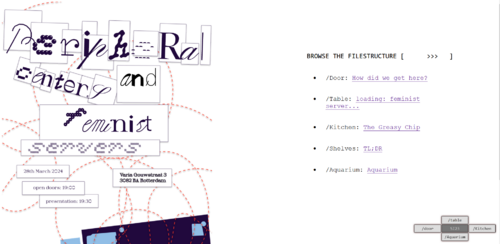 Quilt landing page with animations, one of many quilt patches I worked on for SI23 |
Student: Writing code is a method I'm well familiar with, and a tool I've been able to apply throughout the SIs (see above) and personal projects. My usual habits of coding, though, are challenged by this course. By nature, I'm a slow and careful programmer. I am trying to be more carefree and experiment more (embrace the seams). I'm hoping the rapid prototyping of next trimester will encourage me to do that even more. But at the end of the day, I am not here to become a better programmer. I am cautious not be be trapped in this 'comfort zone'. So far, I think I've managed to strike a good balance with new explorations, too. Using it as a tool is nice though, and I like to assist and help others (e.g. Senka with Git and Michel with her terminal game)
Coding is present in twitchplaysplotter -->
and in EtherPatches -->
and in Plothatching -->
The wiki
Student: the wiki is curious, as it is all at once a method, a theme and a project in itself. It has proven to be an amazing playground to explore documenting practices, reflection and introspection, and even socializing. However, I have always been prone to obsessive documentation largely as a result of anxiety. I get tempted by insecurities and trap myself with a paralyzing amount of documentational work, in the name of 'justification' or 'validation'. I struggle to find the balance with the wiki, too. I think these experiments are nice, but it shouldn't prevent me from doing work outside of it. Similarly, my role in any group project shouldn't just be 'documenting', even though this is in my comfort zone. That said, classmates have expressed thankfulness regarding these pages (e.g. Anita and Rosa for the documentation pages of SI23's handouts resp. TL;DR project). I myself am, on average, happy about it, too. To my amazement, it is a natural part of my practise that feels like it propels my work further.
The wiki is present in SI22 -->
and in THGTAAA -->
and in WikiBabble -->
and in Wiki Waderer -->
Exquisite Corpse
Student: I remember drawing 'exquisite corpses' at birthday parties when I was younger. I enjoyed these, but had long forgotten about them. Even though this is not necessarily a big part of my practise as XPUB, I want to highlight it because it is a conductor for something much bigger that is part of it. The practise of collaboration is so all encompassing here, that there's no tangible way to capture it. I'm learning to trust my classmates, I'm learning to adapt to their spontaneous 'diversions', I'm learning to become more confident in my contribution and I'm learning to have fun with it all.
Exquisite Corpse is present in Handouts -->
Narrative
Student: in previous endeavours into game design, interaction often is accompanied by narrative. I had been accustomed to using narrative as an aspect of a work. In writing, too. However, to use it as a method to produce work was new to me. We have been using it in the methods classes. Especially the second trimester within my editorial group ((in)ter)dependence, where we tried to embrace different forms of validity[1]. In personal explorations, too (e.g. in this reading, this listening and this writing). Curiously, my interest in narrative seems to have found overlap with the theme of documenting practises.
Narrative is present in SI22 -->
and in THGTAAA -->
Or go to themes for documenting practises -->
Feeling lost...?
Student: I feel lost. I am reassured that that doesn't feel like 'admitting', more so 'expressing'. That is, for example, the result of conversations with Michael and Marloes's writing about 'not getting it', and mostly the sweet people that comprise XPUB. But still, I feel lost all the time. Lost in the program (What should I be doing? What should I be focussing on?), lost in the people (How can I speak up?), and lost in myself. As some of you know, I have been struggling with my mental health for many years. Nov-Feb especially was expecially bad. I'm trying to find my way with this, but it's hard. I keep running into myself in ways I can't seem to escape. I feel stuck in paralyzing spirals of interconnectivity. However, I did decide to come here. This decision was one to embrace exploration and experimentation, even when I find it difficult. And I am confident in this decision. Even though it feels like I am free falling, I try to remind myself that that is okay. And by embracing it, allows for these spirals of interconnectivity to be escaped.
For the rest of this presentation, you, Student, are granted the power free falling: you can now freely scroll through this page, ignoring the strict linking procedure!
As a suggestion: you might consider checking out the TOC -->
Wrap up
Student: did I make it in time? I hope so. Either way, there's so much to condense in 15 minutes that it would be impossible to cover everthing. In fact, the most important things maybe cannot be captured. The overall feeling of collaboration, the evolution of practises and interest and methods... I do hope that this presentation was able to give an approximation of those intangibles. I look forward to continue to explore documentinging practises, performance and interaction and play (play), event hosting, pen plotting (pen plotting), narrative and fictionalization, collaboration and much much much more! Thank you for listening / reading / playing! And thank you, Student, for performing.
Appendix: Selected Projects Catalog
EtherPatches
Find out more about this project on its dedicated project page
Student: Etherpads are magical. They are fascinating not only on a technological level, but also a social one. EtherPatches uses a Processing script to remove text from Etherpad screeshots, leaving you with 'patchworks'. With this project, created in the third week of SI22, I aimed to explore the archiving practise of our project in situ. By removing the explicit words of a pad, EtherPatches capture the dynamic between the group, our evolving interplay
Student: Altough it did serve as the background image in Maria's zine Random Associations of Structured Structurelessness, this project has not played a major role in others. However, it contains an elements of documentation that are becoming more and more interesting to me. Active documentation. Documentation as an art. Documentation of invisible work. It also kickstarted my practise of active wiki documentation.
Through documenting practices connected to SI23 -->
This is a coding project-->
Penplotting
Find out more about this project on its dedicated project page
Pen holders and alignment tools
Student: pen plotting has very much been a collaborative exploration. Not directly Exquisite Corpse, this process does feel like it. With someone else's comfort zone, you are invited to step out of your own. This is great. One contribution I made to the pen plotting practises, was the 3D designing, modelling and printing of pen holders and vertical alignment tools.
This is a dead end. Go to Plothatching -->
Or are you Feeling lost...? -->
Plothatching
Find out more about this project on its dedicated project page and code page.
Student: ik ben bang dat het te veel over media-archeologie gaat. I remember saying this after my meeloopdag last year. A nice thing about pen plotters, is that they are old machines that are inspiring new work. This back and forth between older and newer technology, between older and newer paradigms of thinking about hardware and software, turns out to be really interesting. One such inspired new project is Plothatching: (multicolor) crosshatched plots. I wrote some Processing code for this, and an extensive workflow guide. This project has been one of my more experimental endeavours showing and embracing seams (helped by the more naturally chaotic natures of my accomplices Alessia and Victor).
| --> |

|
Through explorations in print connected to Archival Oceans -->
Through explorations in print connected to Handouts -->
This is a coding project-->
twitchplaysplotter
Find out more about this project on its dedicated project page
Student: I was part of initiating / facilitating the Pen Plotting Party. This event really solidified the stark difference between my previous and current environment of study: to be surrounded by likeminded people, who get excited about similar things is amazing! Facilitating such an event also turned about to be an amazing experience. I have gotten tastes of event planning for both SI launches, and have been in calls with OSP for another Pen Plotting Party, in Brussels!
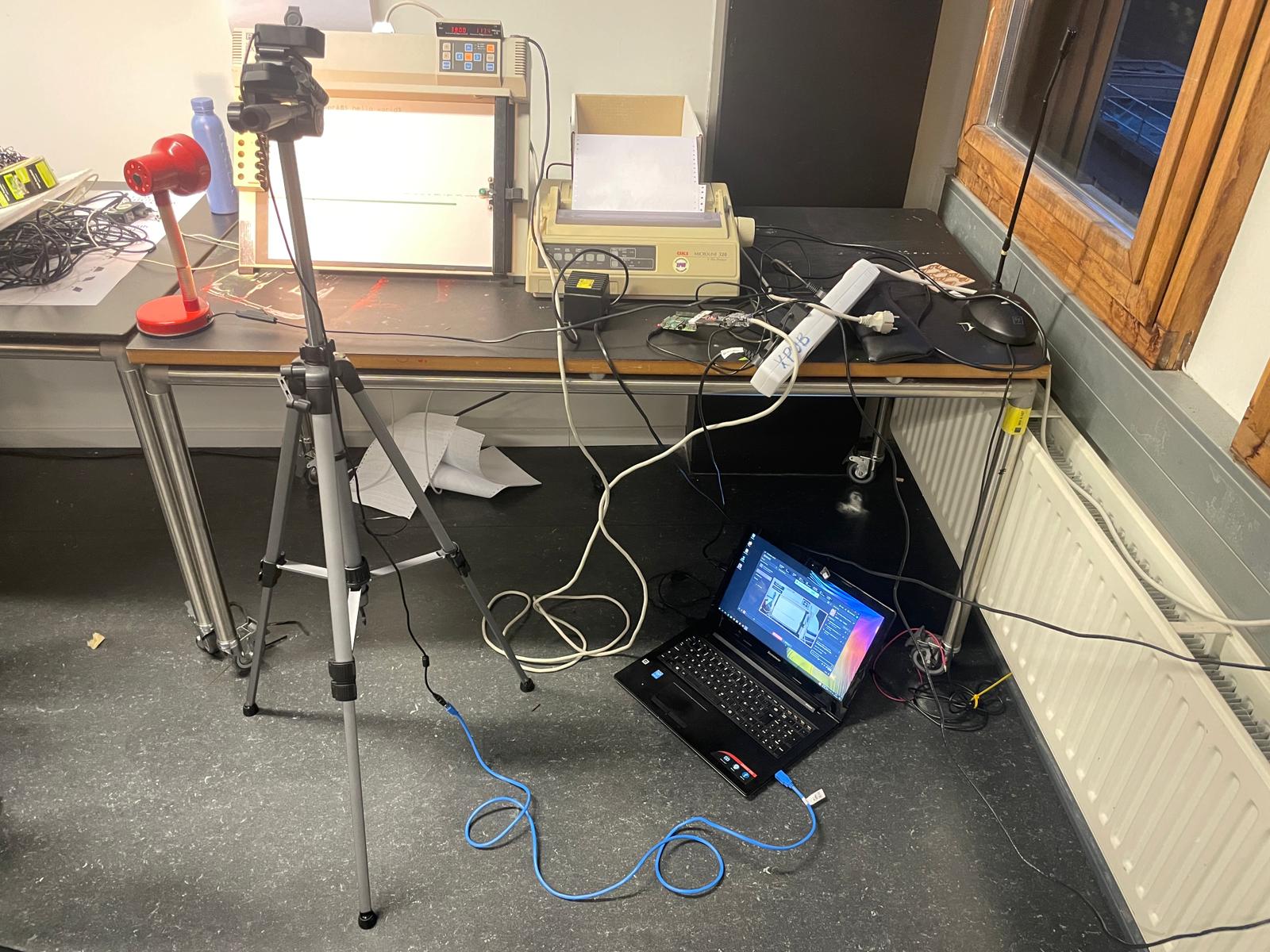
|

|
Student: Anyway, this project was a collaboration with Rosa and Victor, in which we connected a pen plotter to a Twitch livestream. Through the chat, viewers could plot with the machine. Plotters are so performative! It emerged from a prototyping session and it was my first real project with node.js.
Through performance and interaction connected to THHGTAAA -->
Through performance and interaction connected to Archival Oceans -->
This is a coding project-->
SI22 collection
Student: looking back at the start of the course, how would I describe how I felt? It is one of these occassions where you feel so much, where you have put in so much effort to keep up, that it is impossible to tell if this is 'good' or 'bad'. It was overwhelming. It still is. But I knew it would be, and it's part of why I'm here. However, it did make me feel a little lost during SI22. I documented this all extensively in my first big wiki page. The wiki has captured me. During the SI, I worked on some broadcasts, the narrative, and the project Listen Closely.
Student: I found it particularly difficult to claim agency over what I'm doing. It's such a shift of gears for me, and I feel like learning how to do this will be one of my major challenges, but also my major thing to get out of this programme. By the time we got to the launch event, I was depleted of energy. I felt like I had failed on many accounts. Most of all though I had stepped outside of my comfort zone during the SI, but not in preperations for the launch event. I hadn't seized this opportunity.
The Hitchhiker's Guide to an Active Archive
Find out more about this project on its dedicated project page
Student: For the radio show XPUB: Protocols for an Active Archive part of SI22, I collaborated with Anita and Rosa to create The Hitchhiker's Guide to an Active Archive. This show was a Choose Your Own Adventure style radio drama, with the content of the show reacting to listener actions in an Etherpad. This was very much inspired by George Perec (e.g. Die Maschine[2] and ch2 of Mainframe Experimentalism[3]). [This project was a magical experience to me, and written words cannot do it justice. So, Student, you will have to speak from your heart now.] In this project, many interests came together. Interactivity of static media. Performance and improv and narrative. Self documenting projects. From all my work in XPUB so far, this one has had the biggest impact on me. For example, this presentation is a clear result of the Hitchhiker's show!
Through performance and interaction connected to Archival Oceans -->
Through performance and interaction and the wiki connected to Wiki Wanderer -->
This is a wiki project-->
This is a narrative project-->
Archival Oceans
Find out more about this project on its dedicated project page
Student: After the Hitchhiker's Guide to an Active Archive radio show, zinecamp was right around the corner. I teamed up with Anita once more to create a publication in respons to the radio show. There are three editions: one for each role from the radio show. Like the show, this publication aims to build on a tradition of choose your own adventure adventures with a twist. By having each edition present one part of a script, the 'your' in 'choose your own adventure' is made plural. This way, the zine invites a collaborative performance. Aside from Dungeons and Dragons, I have little experience with (traditional) performance, and I did not foresee my projects going in that direction. I think it's an extension of my interest in interactivity, about the more general concept of 'play' (Homo Ludens[4]). The zine also touches on the language of archiving and collaboration, themes that were very much present in both SI22 and SI23.
Through performance and interaction connected to THHGTAAA -->
Through performance and interaction connected to Wiki Wanderer -->
Through explorations in print connected to Handouts -->
This is a wiki project-->
SI23 collection
Student: for my second trimester, I set myself the goal of contributing to a tangible project. I had been enjoying the event planning of the first special issue and the pen plotting party, and had little experience with the tangible component of such events. So I joined the communication team to work on the promotional material. Also, the top-down approach we decided to use worked way better for me.
Handouts
Find out more about this project on its dedicated project page
Student: Because I had mainly worked conceptually on last SI's event, I wanted to get more familiar with the tangible aspects as well. I had little experience with this, but decided to join the communication team to work on the promotional material for SI23.
Through explorations in print connected to Archival Oceans -->
This is an Exquisite Corpse project-->
TL;DR
Find out more about this project on its dedicated project page
Student: Even though I am ever interested in interaction and game making, I ended up not dedicating myself to that for the launch event of SI23. Instead, I focussed more on a installation piece (which in many ways invites interactivity, too! A new form of it, for me) I collaborated with Rosa and Senka on a project regarding logged and unlogged labour surrounding technology, in particular chopchop. Although I didn't mean for it to happen, this project has been a catalyst in thinking more (critically) about documenting practises, and its connections to invisible labour, for example.
This is a dead end. Go back to themes -->
Wiki
WikiBabble
Student: WikiBabble is a project I initiated with Alessia that uses the community wiki as a messaging service. It facilitates different chatrooms, like personal chats, channels for memes and organization, and topic specific chatrooms. These [point at images below] are two screenshots of WikiBabble: the chatroom index (left) and the Cinebabble chatroom (right), which we use to discuss cinema. I am intruiged by the tension of these intimate conversations through an explicitly public medium like this wiki. And that's not just for style, either. This way of chatting actually provides new tools in conversing, like how it facilitates multiple 'levels' of communication.
Student presses 'edit source' for this section, highlighting the HTML comment and alt text.
This is a wiki project-->
Wiki Wanderer
Student: During my first few days at XPUB, I was asked a lot about 'my practise'. This is a daunting question. When we were given the blank slate of our user pages, I decided I'd rather show something that intrigues me, instead of listing these interests. On the surface, Wiki Wanderer is a Choose Your Own Adventure story: through deciding between different branching options, a wiki wanderer navigates a their story. However, this is a wiki! Any user can edit anything! This projects invites its players to do so, becoming not just a 'choose' your own adventure, but a 'create' your own adventure. For example: this [point at image below] option was added by Victor.
Student: Anyone being able to edit anything is a unique feature of the wiki as a medium, that's what sparked this project for me. Besides, I noticed that some classmates weren't as comfortable with wikiing, and I hoped this would provide them with an invitation to experiment, or at least show that such a place need not be used solely for archaic and formal practises. Looking back, it's interesting to see that the first project I did since starting XPUB was a CYAO game. It was an early exploration of a continuing interest of interactivity, story telling and bending of static media. Through conversations with Michael, Rosa and Anita, these interests would later be explored further in The Hithhiker's Guide to an Active Archive. That these projects flow into each other through such collaborations is a new and wonderful experience for me.
Through performance and interaction connected to TTHHGTAAA -->
This is a wiki project-->
References
- ↑ Star, S.L. (2016) 'Misplaced concretism and concrete situations: feminism, method, and information technology,' in The MIT Press eBooks, pp. 143–168. https://doi.org/10.7551/mitpress/10113.003.0009.
- ↑ Perec, G. (1968) 'Die Maschine (Radio Play).'
- ↑ Higgins, H. and Kahn, D. (2012c) Mainframe experimentalism: Early Computing and the Foundations of the Digital Arts. Univ of California Press.
- ↑ Huizinga, J. (1949b) Homo Ludens: A Study of the Play-element in Culture. Routledge/Thoemms Press.

